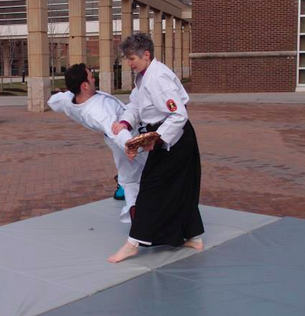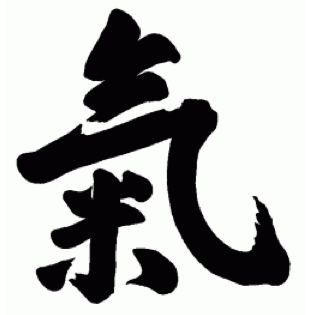Is Kokikai Effective as Self-Defense? (Part II)
 |
| Kokikai Aikido: Defense Against Handbag-Snatch |
You Need to Practice For Years Before It's Effective...Right?
Wrong.
- I teach 90-minute seminars that provide effective concepts that people can walk away with and practice their whole lives (hint: it's the four basic principles!)
- There are many, many stories of Kokikai students, even people with 6-8 weeks of experience, defending themselves against very real attacks. Those I know of include women being threatened or attacked, robbery attempts and kids being threatened at school and in their neighborhoods. There are at least two very powerful stories on the Kokikai website. Many times, because of their training, Kokikai practitioners are able to keep a situation from escalating so that it doesn't require physical self-defense.
- As an orange belt, I used an aikido technique against a very large and strong 2nd dan in tae kwon do who attacked me with a knife. It was in a class, not real-life. But I know that he was utterly taken by surprise - the throw was real.
- In some (not all) ways, it's easier to defend against a real-life attack than what we do in class, because the attacker is taken by surprise. What we do is counterintuitive to what an attacker expects: when attacked, we relax. Instead of going one way, we go the other. Just when they thought we were pushing, we're pulling.
Shouldn't I practice Krav Maga or another very aggressive martial art? Just In Case?
You could spend 15 years learning a very aggressive martial art, preparing yourself to be attacked in some movie-script/MMA scenario. But life is full of surprises. When we get into a dangerous situation, it may not go the way you expected:- Your opponents may all have guns. It's likely that calmness, awareness, relaxation will help you more than knowing how to break knees. Have a look at this story.
- You may be attacked by someone you can't, or don't want to hurt: someone who is mentally ill, someone in your family or in your community. There are many cases where we need to protect ourselves, but if we cause physical harm there may be negative consequences.
- You are traveling, and a natural disaster happens. Will really good kicks and counterattacks help? No. Will calmness and being self-possessed help? Just maybe.
How do you want to spend your years of training? Do you want to be learning ways to break someone's elbow, or 45 immobilizing pressure points? Do you want to hang around with people who are enthusiastic about doing that?
Or would you rather spend your time learning a martial art that:
- Teaches you how to handle uncertainty with calmness
- Teaches you how to react to any stressful and threatening situation, including an attack
- Teaches ideas that help you be more happy in daily life
- Offers a community of people who are positive, relaxed, friendly, and compassionate



Comments
Post a Comment